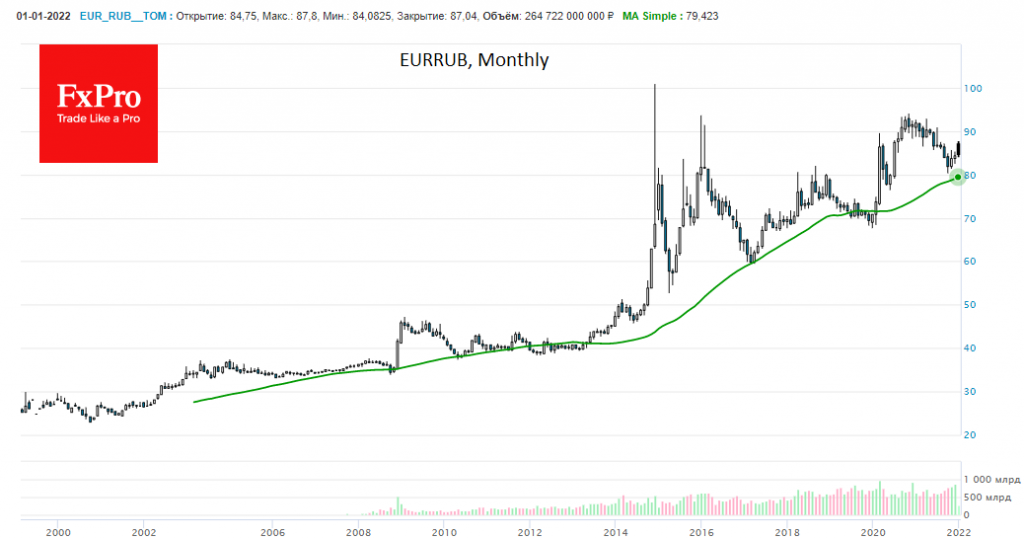Ruble’s fall on geopolitics is likely to continue
January 14, 2022 @ 13:50 +03:00
On Thursday, the Russian ruble lost more than 2% against the dollar and euro, as both sides’ hawkish comments followed the Russia-NATO meeting. In early trading on Friday, the dollar was above 76.6, and the euro was 87.8 on the Moscow exchange. Friday morning, the Russian market shows cautious buying as investors generally believe that all sides benefit from the talks and reduced tensions. In such an environment, we see the third attempt in two and a half months to buy back the ruble after a failure. At the time of writing, the dollar is back below 76, and the euro is back to test 87.
In our view, it is now too premature to buy back the fall and bet on normalisation. The rhetoric of the statements indicates a willingness to escalate, so the situation is likely to get worse before it gets better.
The investor reflex formed in recent years – that a sharp fall in the ruble and the equity market are an opportunity to buy a good asset at a discount – is now highly questionable.
By and large, the ruble and the Russian economy face risks no less serious than in 2014, when US and EU sanctions and Russia’s response to them raised Russian market volatility to global financial crisis levels.
In the coming days or weeks, geopolitics override solid fundamentals for the Russian ruble, such as strong consumer demand and expensive oil.

Recent weeks have brought the ruble back down, forming the third EUR/RUB rebound in the last five years from the 50-month average, which has acted as a long-term trend benchmark over the previous 20 years. The long-term technical picture suggests that the strengthening of the ruble for most of last year was a corrective rebound from the growth impulse from the lows of early 2020 to a peak later in the year. From this perspective, the euro could surpass 90 and the dollar 80 by the end of this year.
The FxPro Analyst Team







